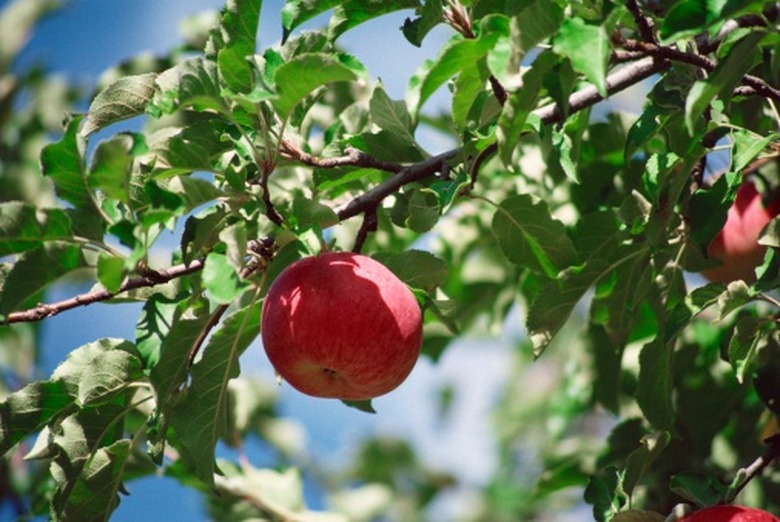Why Are My Apples Falling From The Tree So Early?
We may receive a commission on purchases made from links.
It can be disheartening for a gardener to discover scads of small, immature apples dropping from an apple tree early in the growing season. There are several reasons why apples prematurely drop; some are a part of the normal life cycle, but others indicate a pest infestation or environmental issue. When growing apples, being aware of those potential causes can help you avoid or correct the situation to protect your apple crop.
Tip
Apples can drop prematurely for a variety of reasons, including poor pollination, bad weather, pest infestations, lack of nutrients, and herbicide damage.
First Apple Drop
First Apple Drop
The first drop begins just after the petals fall from the tree and may continue for the next two or three weeks. At this stage, the apples aren't much bigger than a pea when they start to drop. Inadequate pollination is a common cause of apples dropping at this stage. Most apple varieties produce little or no fruit when pollinated by their own pollen. They need to cross-pollinate with a different apple variety.
Environmental Factors for Apple Dropping
Environmental Factors for Apple Dropping
Honeybees are the most important pollinator of apple trees. Cold, rainy weather prevents bees from flying and collecting pollen. If rainy weather persists throughout the flowering period, honeybees won't get the chance to pollinate the apple blossoms.
When apple blossom buds begin to open, they become vulnerable to freezing temperatures. The further along they are in opening, the more susceptible to the cold they become. Freezing temperatures during flower bud development or blossoming are a major environmental cause of early apple drop.
Second Apple Drop
Second Apple Drop
The second drop, more commonly known as the June drop, seems to cause gardeners the most concern. By this time, the apples are between one-half inch to one inch in diameter.
The most accepted explanation for the June drop is the temporary lack of adequate carbohydrates in the plant. Apple trees need plenty of carbohydrates to produce apples. Cloudy weather and low temperatures reduce the rate of photosynthesis, which causes a carbohydrate shortage. On the other hand, high nighttime temperatures stimulate higher respiration rates, which further lowers carbohydrate reserves.
Apple Tree Insect Problems
Apple Tree Insect Problems
Damage by insects will cause premature dropping of apples. Apple maggots, the larval stage of a small fly, tunnel through apples while feeding. The damaged apples often fall from the tree prematurely. The plum curculio is another insect that feeds by burrowing through apples, causing fruit drop. The codling moth, the proverbial worm in the apple, will cause premature dropping by its feeding habit of tunneling to the apple core.
With proper apple tree care, you can reduce the risk of pest infestations that cause premature apple dropping. Weeding and raking up leaves to keep your apple orchard clean can help. Regular pruning with sterilized pruners helps with air circulation and can protect against pests.
Other Apple Tree Concerns
Other Apple Tree Concerns
Other less common causes of premature apple drop include diseases, nutrient deficiencies or toxicities, profuse blossoming and over-pollination, excessive heat, irregular watering, sudden changes in humidity, and herbicide damage. Being aware of how you care for your apple trees can help avoid those issues. Consistent watering, appropriate fertilizer applications, and careful use of herbicides are important.
Keep in mind that an apple tree will produce many more flowers and young apples than it can possibly grow to maturity. It's part of the natural life cycle of the tree to shed these extra, unneeded apples early in the growing season.
